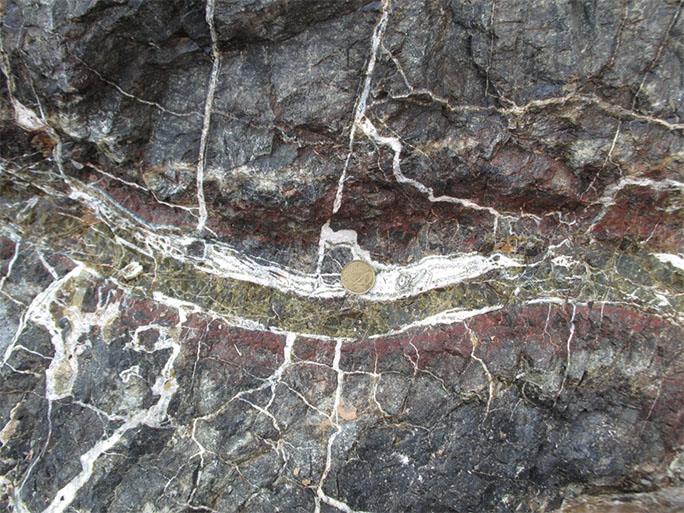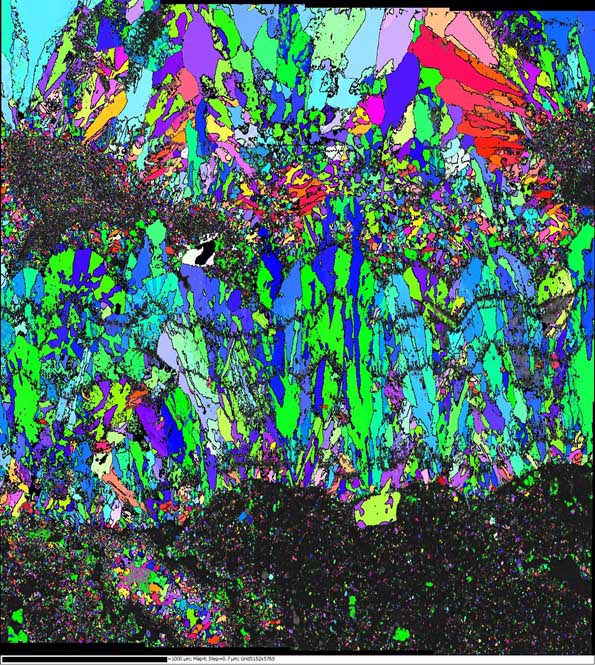Carbon capture in deep Earth rocks
Alteration processes in peridotite, the most abundant rock in Earth’s upper mantle, are important globally because they influence the deformation of subducting slabs, play a key role in the water and carbon cycles on Earth. They provide an environment suitable to the development of chemosynthetic organisms and could represent a geological means of carbon capture and storage.
Alteration reactions involve the replacement of olivine, the main constituent mineral of peridotites, by serpentine (Mg,Fe)3Si2O5(OH)4 (hydration) and magnesite (Mg,Fe)CO3 (carbonation).
In collaboration with the Universities of Southampton and Genova, and with the Oman Drilling Project, this study looks at the microstructure and microchemistry of rock core from the Samail peridotite, to close gaps in our knowledge on the timing and the mechanisms that enable replacement reactions to proceed to completion.

Geothermal mineralisation
Geothermal systems experience a range of mineralogical processes from hydrothermal alteration to porosity and fracture mineral scaling. These mineralisation processes impact the behaviour and evolution of geothermal resources, and must be understood in order to predict, manage, and efficiently utilise these important energy transition geosystems.
Our research uses nano-microanalysis of mineral chemistry and crystallography to investigate the physical mechanisms and rates of mineralogical processes in geothermal geosystems. This provides much needed mineralogical data required for accurate modelling of geothermal mineral processes, and assists in the development of tools and methods that can generate desired mineralogical processes in geothermal geosystems.

Image: EBSD map (IPF-Z) of geothermal quartz fracture scaling
Back to: Scanning Electron Microscopy Shared Research Facility (SEM SRF)